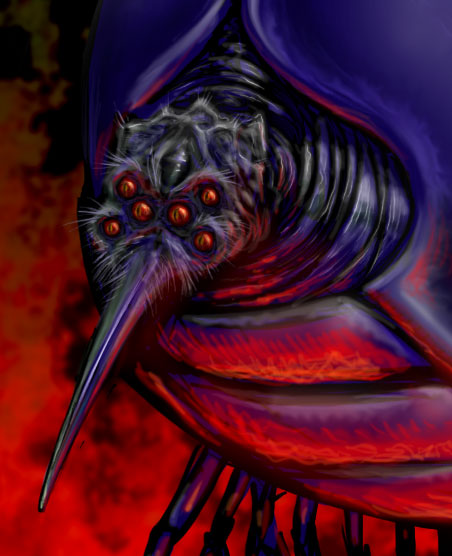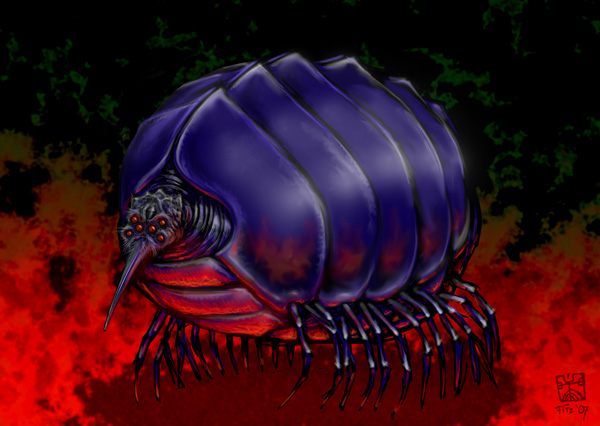This is yet another critter that may or may not make its way into my roleplaying games. It started out as an aimless doodle, just fiddling around in Photoshop when I had nothing else to do, but then I thought I'd use it as an exercise in reflections. Reflections are hard when using nothing but my imagination; the real world often works in ways that I find unexpected, and I tend to find that my imaginery perceptions are quite wrong when I compare them with real-world examples.
One method that I sometimes use to ease the problem is to create a rough mock-up of a scene in PovRay (I use the MoRay front-end which makes it much easier) and use a raytrace as a lighting reference. That can work quite well, but you have to be careful not to follow the raytrace too literally when you're drawing from it or else you just end up with a sketched copy of a raytrace, which is kind of pointless.
Anyway, I didn't do that this time. I just tried to figure it out for myself, with only modest success, but there you go. It's certainly not a well-finished picture; it's more to a concept-art standard — good enough to see what's going on, but that's it.

Until computer displays get a lot better and you can work in resolutions higher than about 100ppi, you inevitably end up unable to see most of the image you're working on, since most of it is off-screen. That can lead to problems with tonal composition because you become fixated on the teensy portion you can see at the time rather than the image as a whole. I find I have to keep zooming in and out to check that the image does actually look the way I think it does.
This detail is at a 1:1 pixel ratio — in other words, this is the actual working size. I sometimes work on details zoomed in at 200% or 300%, but especially if you're working for print that's not often worth-while. This image (the whole thing, not just the detail) would print at A6 (105x148mm) at 300ppi.
